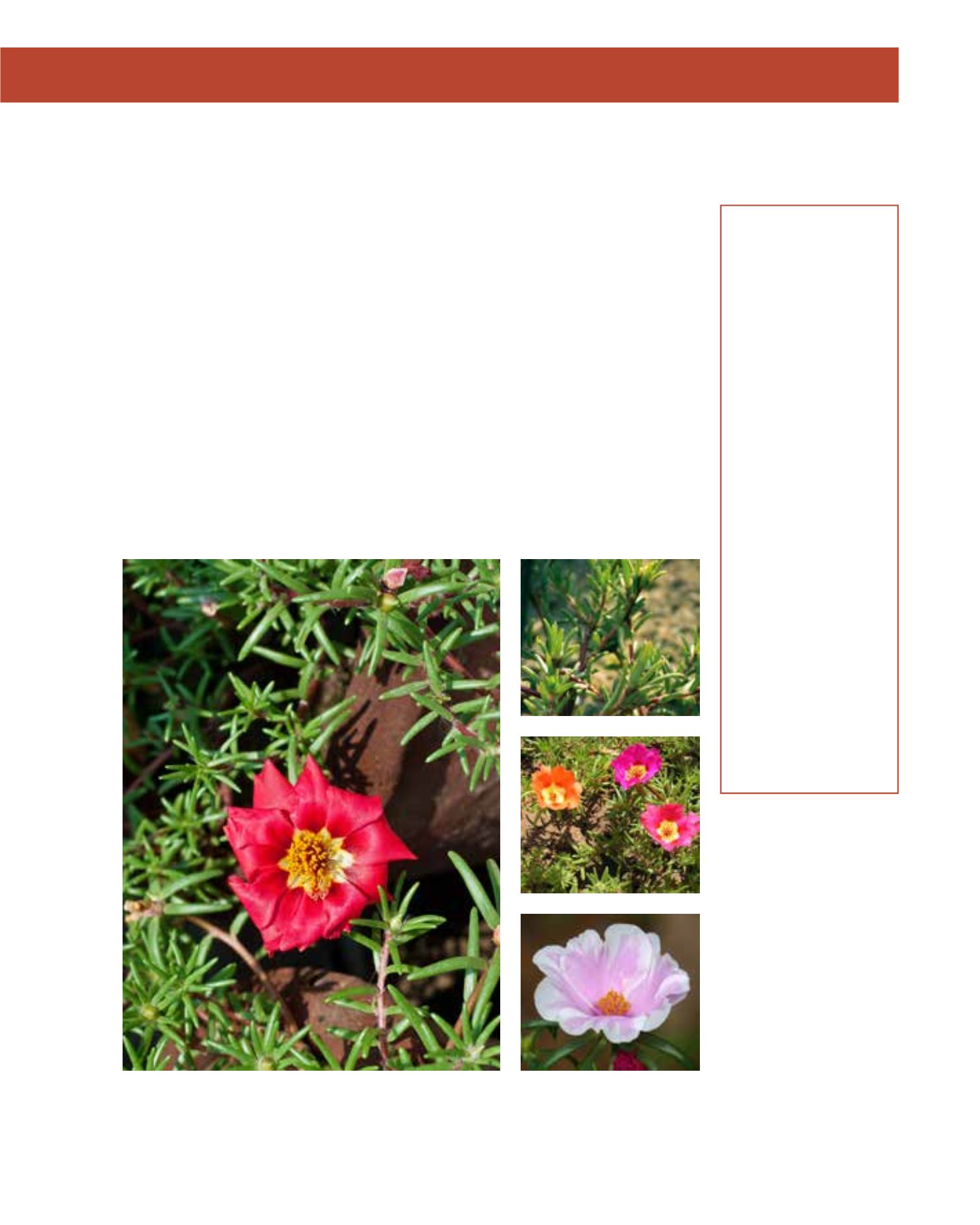

GENERAL
Origin
:
sub-tropical,
tropical
Vigour
:
slow-growing
Humidity
:
extremely arid,
very arid, semi-
arid, semi-humid
Propagation :
direct sowing,
sowing and
pricking out
Maintenance :
low
CONDITIONS
Urban climate :
resistant
Dessication :
resistant
Stagnant water :
vulnerable
Irrigation
:
low
Salinity/ppm :
moderate (3000
ppm)
Hardiness
:
0°C
SHAPE
Type
:
annual, biennial,
perennial
Height
:
0.1 m-0.15 m
Spread
:
0.2 m-0.3 m
Foliage
:
evergreen
FLOWER
Colour
:
yellow, white,
pink, red, violet,
purple, yellow
Size
:
2 cm
Period
:
June - October
FRUIT
Type of fruit :
capsule
Fruit size
:
0.6 cm
Toxicity
:
inedible
Rose Moss is a low, fast-growing succulent native to Brazil, which is usually grown as an annual
plant for colour displays. Tolerant of all conditions in Arriyadh, it is often seen as an edging or
filler plant. Reaching only 15 cm in height, it has fleshy stems and cylindrical leaves about 3 cm
long, arranged alternately, or in small clusters with pointed tips. The small, rose-like flowers, with
a whorl of leaves at their base, have very bright colours and are often seen as mixed cultivars of
pink, magenta, orange, red, yellow and white. The striking flowers, opening only in full sun, are
in bloom throughout the summer and later, and new colours are regularly being cultivated. The
plants tolerate heat and drought, but are more attractive with regular watering; overhead irriga-
tion, which damages flowers, should be avoided. The Rose Moss grows in poor, sandy or gravelly,
well-drained soils. Propagated by seed or cuttings, even chopping a plant into tiny pieces and
spreading them on a sandy loam bed is possible. Pests are generally not a problem, but plants can
be severely damaged by frost. Maintenance requirements are not high, except for weeding and
the eventual replacement of plants. P. grandiflora is a good groundcover for small garden areas,
patios, hot slopes, rock gardens and containers.
242
Portulaca grandiflora,
Portulacaceae
Common Portulaca,
Rose moss
















